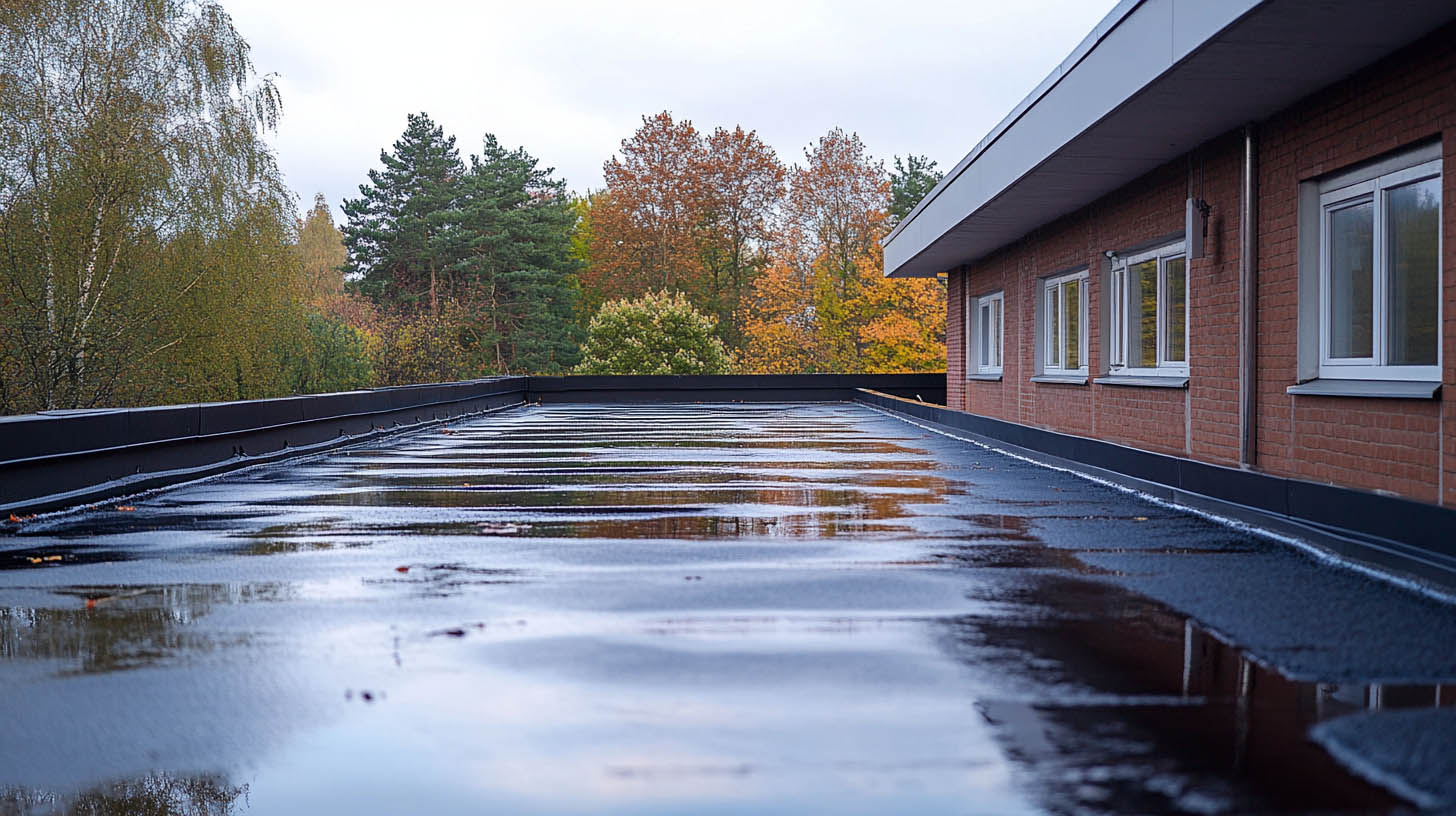
Flat roofs are common on commercial buildings, but they pose unique challenges, especially when it comes to water drainage. With proper maintenance and preventive strategies, however, flat roofs can remain leak-free and protect building investments. Rainstoppers Roofing offers expert tips on how to prevent water damage on flat roofs, ensuring business operations continue smoothly.
1. Regular Roof Inspections
A proactive approach to roof care begins with frequent inspections, especially after each season. Regular inspections allow building owners to detect small issues before they escalate into costly repairs. After fall, for example, leaves and debris often accumulate, potentially clogging drains. A clean roof post-inspection is crucial in maintaining effective drainage on a flat roof.
Unique Fact: Over 85% of flat roof leaks stem from small, overlooked cracks and gaps that develop over time, making regular inspections essential for long-term durability.
2. Minor Repairs and Replacements
Even with regular inspections, minor repairs are inevitable. Small cracks or fissures can develop due to weather or debris impact. Ignoring these small issues can lead to more significant structural damage, as water will find even the smallest openings on a flat roof. Addressing minor repairs promptly helps avoid expensive fixes in the future.
3. Drain Cleaning and Maintenance
One of the leading causes of water damage on flat roofs is clogged drains. Blocked gutters and downspouts prevent water from draining, causing it to pool and place stress on the roof. Clean gutters twice a year and hire professionals if possible to ensure the drainage system functions efficiently when needed.
4. Prompt Snow Removal
Snow is particularly challenging for flat roofs. When left to accumulate, the weight of the snow exerts stress on the structure and, as it melts, can lead to water pooling. Removing snow from the roof soon after snowfall protects the structure and reduces water damage risk.
Preserving Your Roof and Business Assets
Maintaining a flat roof involves regular care and vigilance, especially in areas prone to heavy rain or snow. By implementing these preventive measures, building owners can protect both the roof and the investments within.
FAQs
1. How often should flat roofs be inspected?
It’s best to inspect flat roofs at least twice a year, ideally after winter and fall.
2. Can water pooling damage a flat roof?
Yes, water pooling increases stress on the structure and can lead to leaks over time.
3. Should gutters on flat roofs be cleaned regularly?
Gutters and drains on flat roofs should be cleaned bi-annually to ensure proper drainage and prevent blockages.To learn more about what to expect during a roof replacement, click here.
